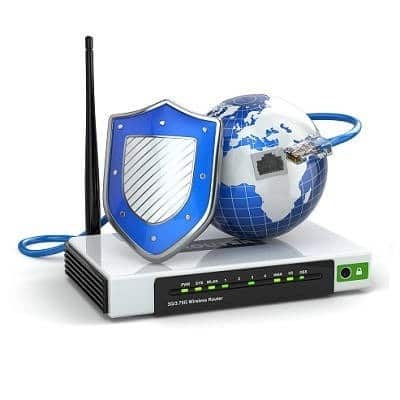Unified communication is one of the most important parts of running a business. When your team is working together toward a common goal, they require the use of a solution that enables them to work seamlessly. Thankfully, unified communication tools give your team a way to make operations easy and a method for bolstering company culture. Let’s talk about how your organization can implement unified communication tools and benefit from them.
Security Considerations Even though you aren’t in the office, you still need to follow the same security protocols and the processes you would need to follow if you were working in the office. In fact, these processes become even more important, as your home network is likely less secure than the one in the workplace. Here are some tips: Be Hygienic We aren’t telling you to brush your teeth or wash behind your ears, we are talking about practicing good security hygiene while you work remotely. Don’t reuse your passwords, use multi-factor (or two-factor) authentication to secure all accounts, and don’t share out information over email if you don’t know for certain who will read it. In other words, all the basics still apply. Be Mindful For similar reasons, you also need to be extra careful of online scams or phishing attacks while working remotely. Lost business data is lost business data, regardless of where you were when it was left vulnerable. Make sure you are up-to-speed in terms of identifying and mitigating breach attempts. Use a VPN Finally, because you will not be protected by the defenses on the company network, you need to implement a few extras, such as a virtual private network. A VPN uses encryption to conceal the contents of any data you transmit over the Internet, protecting the contents from virtually all attacks. Business Practices Again, as you aren’t in the office, your remote work needs to follow the same processes as it would if you were in-house, and you will need to be more deliberate about carrying them out. For instance: Use Communication and Collaboration Since you are not working alongside your colleagues and coworkers while you are working from home, you should be extra diligent about remaining in contact with them. Use your email, instant messaging, and phone capabilities to keep the rest of the team apprised as you progress with your tasks. Follow Processes As we don’t want anything falling through the cracks as we continue our operations, it is important that each team member sticks to procedures with every task they touch. This will help ensure that all the ‘i’s are dotted and each ‘t’ is crossed, and that things progress productively. Schedule Strategically While you should still work the amount of time you would be in the office, you may have a little more freedom and autonomy as far as your schedule is concerned. Don’t be afraid to arrange your tasks around any scheduling conflicts you may have, or shuffle your tasks to better fit your productivity levels throughout the day. Personal Wellness Finally, it is crucial that you are able to manage yourself and your time while not in the office environment. Here are a few tips to help you do so, that may be useful to keep in mind. Set Limits While the assumption surrounding remote work is that employees are prone to slacking off, it is also likely that you may be tempted to push yourself a little further than you should with your day to try and accomplish as much as possible. While this is an admirable goal, it isn’t effective if you overwork yourself one day and accomplish almost nothing the next as a result. Moderate yourself and stop when it’s time. Build Patterns Process
These statistics outline that by allowing employees to work from home, your company will see some very tangible benefits. Like any human resources strategy, however, you’ll need to keep a few considerations firmly in mind to get the most out of it. Treat It Like Business as Usual When you are working with your remote employees, it is important that you don’t focus exclusively on your in-house staff. Maintaining communication with every one of your staff is necessary for your operations to continue, so if anything, you need to encourage your in-house workers to regularly check in with your remote employees and involve them in their processes. You should also avoid the temptation to hold off on meetings. Again, don’t act like anything has changed as a result of your employees working from home. If you have regular meetings at a given time, continue them, and simply use the technology available today to include your remote staff members. Provide the Means to Communicate Speaking of which, it is also important that your remote team members have the tools that allow them to communicate with their contemporaries. If you haven’t already done so, consider switching your telephony to a VoIP (Voice over Internet Protocol) solution. This will enable your remote staff members access to your business’ phone system, rather than using their own for professional purposes. Other useful collaboration tools include things like video conferencing, instant messaging, and (of course) business email. Give Them Access and Tools Your remote workers aren’t going to be capable of being productive if they don’t have access to the necessary resources and applications required to carry out their assigned tasks. Make sure they have this access, either by enabling remote access into their workstation or by providing them with a laptop that they can take with them. It is recommended that, if you elect to take the remote access option, this access is secured through the use of a virtual private network (or VPN). This tool ensures that whether your files and applications are stored on-site or in the cloud, that access to data is available from anywhere a connection can be established. Don’t Forget About Security It is critical for the health of your business that you uphold remote workers to a higher standard for data and network security. Remote work brings increased risk. Using the aforementioned VPN is just one of the many tools that will work to maintain the integrity of your business’ digital assets. Another important security measure is to be sure that your remote users are forced into using password best practices for authentication. Some Suggestions: Hosted VoIP for using phones from any device and anywhere. A VPN for secure connections to the office network. Remote access policies to ensure compliance and security. Remote terminal access to keep files and applications centralized. Email accessibility for internal and external communication. Conferencing and meeting applications to keep your team engaged. Messaging applications to facilitate easy coworking. G-Suite/Office 365 for document publishing and collaboration. Disaster Recovery solution to prevent productivity-loss issues. Our IT professionals are here to help you extend the reach of your business and do it to ensure that your assets are protected. Reach out to SRS Networks today to kickstart your remote workforce on a path to productivity. Call (831)
Let’s review how your employees can still work remotely, while also maintaining the security standards you expect. This will require them to follow a few practices with their home networks: Use Password Best Practices It doesn’t matter that a home network is different from a business network, as password best practices are generally universal. Therefore, when setting the credentials for your home network, make sure that the usual standards apply, and that the rest of your team does the same. Here are three things that can help you keep your Wi-Fi secure: Make sure that your passwords are sufficiently complicated, avoiding common phrases and password rules. There are many articles that can be found online that summarize the most popular (which means insecure) passwords, and there are a few patterns that can be spotted quite easily. Avoid using these kinds of shortcuts. Consider using a passphrase, instead of a password. A good passphrase is the combination of random, unrelated words, and relying on one of these can boost the resilience of your accounts exponentially. Change your network access password regularly and avoid giving it out. Most people won’t need the password to your Internet connection, so don’t give it to them. Keep Your Setup Up to Date Many people may not think to update their networking equipment until things start to work poorly. However, in order to take advantage of remote access, you and the other users connecting need to make sure that their tools are fully optimized and secured. A few pointers: Install a firewall and antivirus. While these protections are sure to be installed on your professional network/workstations, there may not be enough on an employee’s device. Make sure you know what they currently have, and if need be, have them install a stronger version of both. A Virtual Private Network (VPN) should always be in use. Adjust your hardware settings. It is likely that your employees have not updated all their networking hardware or are not using it with the best configurations enabled. Take the steps to walk your employees through the process of changing the SSID on their router and other customizations. Make sure that all software is fully patched and updated. Whether your employees are using devices supplied by the workplace or their own equipment, make sure the proper security tools are installed and up to date. This includes the programs they are using to complete their tasks, as well as the software that controls and secures their devices, like their wireless router, their antivirus, and their firewall. Of course, your employees should also be just as aware of the computing best practices that you should be enforcing in the office while they are working from home. For more security best practices and solutions, give SRS Networks a call at (831) 758-3636.
Here are three variables you should consider when deploying a remote workforce. Employee-Owned Devices Deploying employee devices to meet your business demands is a risky proposition unless you have the right security measures in place. You will want to give your employees the technology that will give them the best chance to succeed; and, won’t cause any unnecessary problems for your data and network security. This is largely because of the way people utilize their personal PCs. On a workstation, people are told which software to use and stick to those titles, but on a person’s personal PC they have all types of software that your network administrator is unfamiliar with. This software, on a personal PC may not be updated and patched, leaving open vulnerabilities that could, very easily become major problems for your company. Since most people that work from home are using a personal device, you need a way to protect your company’s assets from the quagmire some personal PCs present. One way is to provide remote access software. This will allow users to actually remote into their workstation at work and use the resources like they would if they were sitting at their desks. The one problem with remote software is that it is often targeted by cybercriminals. You will want to ramp up network security and demand authentication procedures be enhanced when allowing computers to access business resources remotely. Insecure Connections In the same vein, when working remotely, some employees will be using shared networks. This can cause your IT administrator a lot of headaches. Most users haven’t set up network and cybersecurity resources that are as comprehensive as the ones that the business has. For this reason your employees’ networks are typically much less secure. Even the networking hardware that they use, often people’s only line of defense, is lacking as the software that runs on it isnt always updated. User Behaviors Probably most importantly here is the user. At home, on their home PC, they are much more likely to do things that they would never think of doing on their workstation in the office. Adding to that, without the constant security reminders they get at work, they are less apt to follow best practices as their workplace enters their homespace. You need to ensure that you make the point that just because they are working at home doesn’t mean that any of the practices that they’ve been drilled on can be ignored. Remind them the dangers of phishing attacks and how it is even more important to be vigilant about what they click on. The last thing we need to talk about is employee misconduct. Some employees, if given a foot, will take a mile. It is important to monitor your employee’s productivity well enough to ensure that they are doing their work, and that the work is in line with what you expect from that position. Some people won’t take to it as well as others, but by-in-large, workers that work remotely work with an ease that allows the work to be better and for productivity to not dip so much as it will cost your business. SRS Networks knows it’s a difficult time for California businesses. We’re here to help. Call us today at (831) 758-3636 to talk to one






